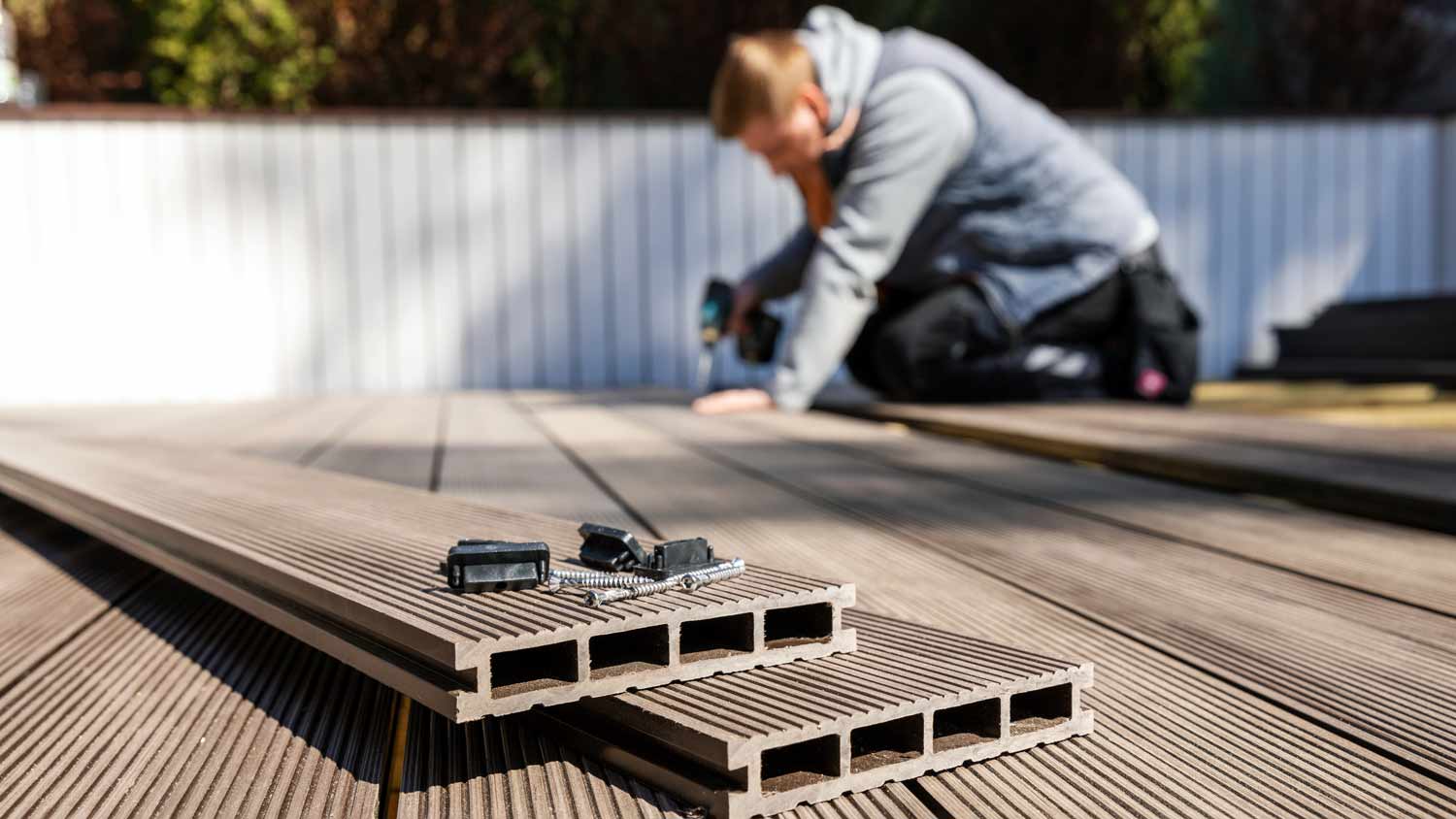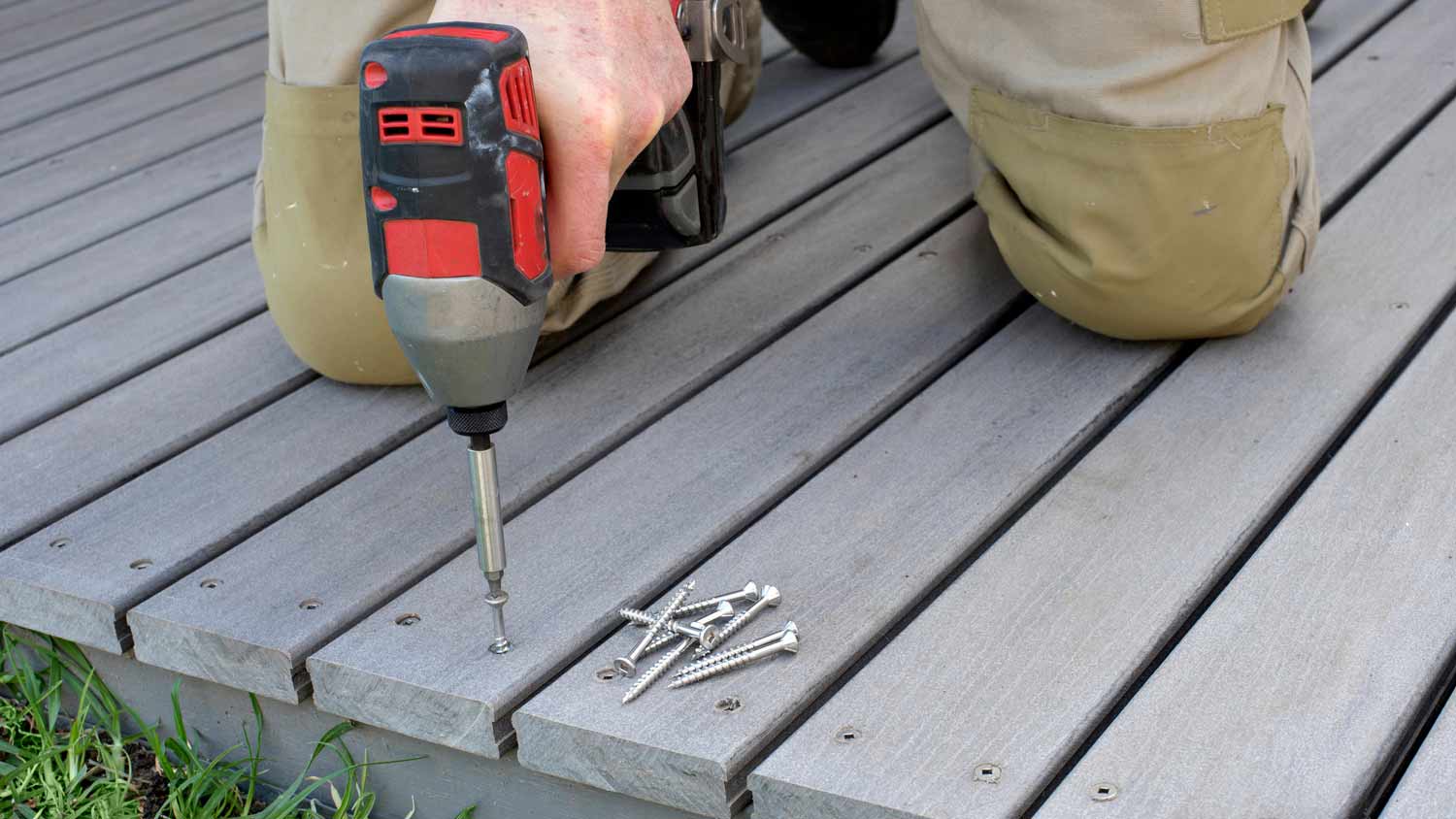
If you’re updating a deck or staircase with a modern railing, you may be wondering how much cable railing costs. We dive into the cost factors you need to know.
Don’t get bent out of shape by your composite decking


Composite decking is more stable than real wood but can still warp.
Heat, low-quality materials, and improper installation cause warping.
Fixing warped composite decking involves replacing the damage.
The best way to prevent warping is to build a deck correctly.
One of the benefits of composite decking is that its wood fiber and plastic composition are less prone to warping than wood. Whereas wood expands and contracts when exposed to moisture and temperature fluctuations, composite decking is more stable. However, because composite materials still experience some level of expansion in warm temperatures and after prolonged exposure to moisture, they can still warp. Are you wondering, “Why is my composite deck warping?” Here are a few common problems and how to fix them.

While composite decking is generally stable, it may still be susceptible to thermal expansion, particularly when exposed to prolonged periods of direct sunlight and extreme heat. Thermal expansion is more likely to cause issues if the decking is in contact with a fixed object, such as a wall or nearby boards, because the board lacks sufficient space to expand.
The right solution depends on how badly it is warped. If only a few boards are warped, you can replace these yourself if you feel comfortable with basic carpentry projects. To replace a board:
Measure the area that needs to be replaced.
Remove the affected board.
Replace the areas you removed with a new board of the same material and color, taking care to provide adequate spacing from nearby boards and walls.
Secure the boards in place with fasteners, following the manufacturer's installation instructions.
For severe warping throughout the deck, call a professional, as you may require more substantial repairs. In some cases, the whole structure may need to be replaced.
Low-grade composite decking is far more susceptible to warping than higher-quality materials. It is more prone to moisture absorption, thermal expansion, and buckling from inadequate support. If you purchased bottom-of-the-line composite decking or your deck installer used low-quality materials without informing you, this could be why your decking is warping.
If only a few boards are warped, you may be able to replace them using the method above. However, in most cases, those with low-quality decking should contact a professional to see if the damage should be repaired or if the whole deck needs to be replaced with a new structure made from higher-quality materials.
Many installation errors can cause composite decking to warp. Examples include:
Boards spaced less than 8 mm apart so they cannot naturally expand in high temperatures or allow for proper drainage, causing water pooling
Boards placed within 15 mm of walls or other immovable objects, limiting their expansion
Incorrectly spaced joists or support beams that do not evenly distribute or support weight on the structure
Inadequate ventilation under the deck that traps moisture, causing swelling and mold or mildew buildup that can damage the deck frame
Overly tightened screws that prevent the natural expansion of the composite material
In most cases, these structural issues require the expertise of a professional. If the deck is still new, it may still be protected by a craftsmanship or manufacturer warranty. Ask your installer for details.
Composite decking is more moisture-resistant when it comes to composite decking versus wood, but it is not entirely impervious to moisture and may incur moisture damage. If the boards absorb enough moisture, they can warp over time. This problem is more likely in decks made from low-quality materials or those with poor drainage, leaving them prone to standing water.
If you only have a handful of warped boards, start by replacing any damaged boards using the previously mentioned technique. Take care to ensure any new boards you install have sufficient space to allow for ventilation and drainage.
If the damage is more extensive, you may need to hire a professional to assess the damage and recommend the best remediation option.
You should call a local deck builder whenever your composite deck has warping on more than a few individual boards or on support beams or joists. The deck builder can inspect the damage and advise you on whether the cost to build a deck would be lower than your deck repair costs or if your deck needs to be replaced due to safety concerns. If you don’t feel comfortable doing any repairs on your own, you may want to hire an expert to replace even a single warped board.

The best way to prevent composite decking from warping is to use high-quality materials and an experienced deck builder at the start of your project. Proper installation and high-quality materials are far less likely to warp, reduce the amount of necessary maintenance, and significantly increase the longevity of your deck. A good installer can even recommend the best material for your location, as some composite decking options offer advanced UV or moisture protection.
If you install your deck in an area with high temperatures and a lot of direct, prolonged sunlight, consider installing a sunshade or awning to reduce the amount of UV exposure it receives.
Finally, keep a regular maintenance schedule to prevent warping. Regular cleaning can help prevent moisture buildup by removing dirt and debris that can trap humidity and rain.
From average costs to expert advice, get all the answers you need to get your job done.

If you’re updating a deck or staircase with a modern railing, you may be wondering how much cable railing costs. We dive into the cost factors you need to know.

Refinishing your deck is a great way to restore its appearance and fall in love with your outdoor space. Use this guide to learn how much it costs based on factors like size and type.

Flagstone patio costs vary by the size, material type, labor, and more. Stay tuned to see how much your flagstone patio could cost.

Discover the cost to build an arbor in your yard. Learn about average prices, key cost factors, and tips to save on your arbor installation project.

Discover redwood deck costs, including average prices, installation factors, labor rates, and tips to save on your new deck project.

Why are my deck boards rotting? Several things could be to blame, including mold, termites, and moisture. Learn common causes and prevention methods.